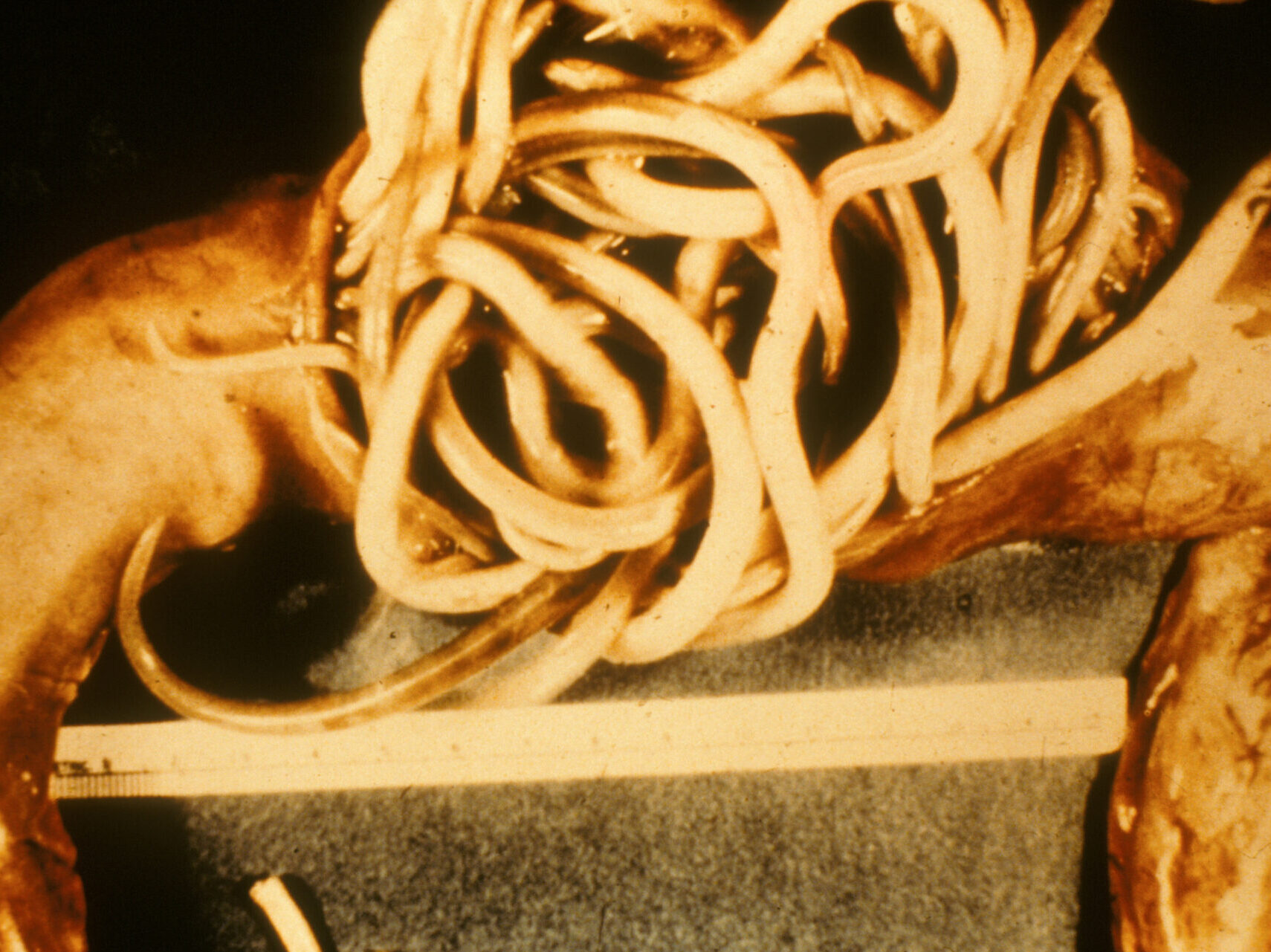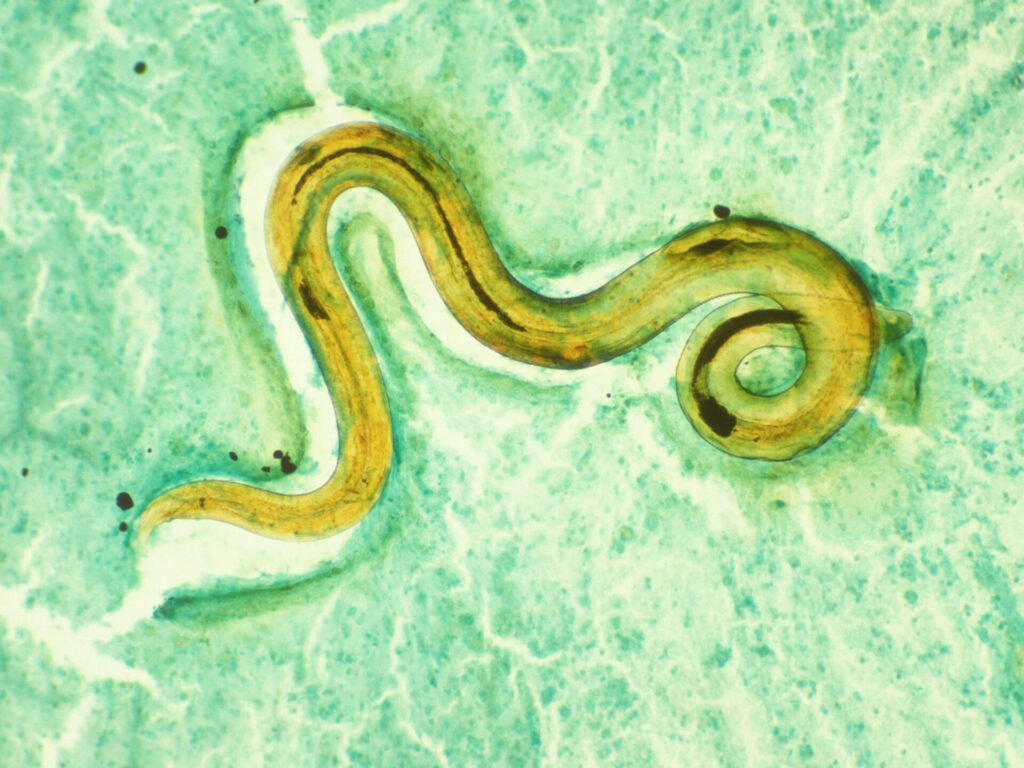Ascarid (roundworm) infections are very common in foals. There are two ascarid species that are known to infect horses, Parascaris equorum and Parascaris univalens. Recent information indicates that of the two species, P univalens is the most common.
Ascarid eggs can survive for years in the environment and remain infectious. The ideal temperature for egg development to an infective L3 larvae is 25-35˚C, but this development is arrested when the environmental temperatures fall beneath 10˚C. However the eggs are not able to survive hot conditions, where temperatures exceed 39˚C. The eggs require embryonation to be infectious.
The lifecycle is complex and involves a migration phase through the liver and the lungs. After ingestion the eggs hatch in the small intestine and L3 larvae emerge and begin their migration, initially via the portal blood vessels to the liver and then to the lungs, where they penetrate into the alveolar spaces before moving to oropharynx, where they are swallowed, returning to the small intestine as L4 larvae. The timeline of this migratory phase is approximately 7 days from egg hatching to reach the lungs, and then an additional 2 weeks before being coughed up and swallowed, returning to the small intestine.
The L4 larvae then require an additional 2 months in the small intestine before maturing as egg producing adults. The prepatent period, the time from infection to detection of eggs, is 90-110 days.
Ascarid infections evoke a host immune response that ultimately eliminates the parasite independent of any deworming (anthelmintic), typically by one year of age. This is why infection is generally restricted to foals, although older animals that have weakened immune systems may also be infected. Peak worm burdens generally occur prior to the time of weaning at 5 months of age.


Signs associated with infection
In the vast majority of foals infection with Parascaris species has little outward impact on the animal. The most important ‘disease’ attributed to the parasites is obstruction of the small intestine. This is very rare, although can be life-threatening. This tends to occur when paralysing anthelmintics, such as pyrantel or morantel, are used in heavily infected foals. Affected foals may require surgery with a small intestinal enterotomy (incision into the small intestine to remove the adult parasites) or ‘milking’ the parasites in to the caecum. These can also be managed conservatively if the pain is controllable using a benzimidazole anthelmintic and general support (IV fluid therapy). The problem can be establishing a diagnosis without surgery. The index of suspicion increases with a history of recent paralyzing de-wormer use, or imaging of the parasites within the small intestine using ultrasound.
Migration of the larvae through the lung tissue into the airway can be associated with a mild, transient cough. Below is an image of a larvae detected on a tracheal aspirate from a 4 month old foal with a suspected Rhodococcus equi infection. No clinical syndrome has been reported with the migratory stage through the liver.


Management
It is recommended to target ascarids twice prior to weaning, at 2 months and 5 months of age with a benzimidazole anthelmintic, such as oxfendazole, using the full labelled dose. A third dose is indicated if there is more than 3 months between the two doses or if weaning is delayed. This class of anthelmintic is non-paralyzing and parasite death typically takes 48-72 hours.
There is strong evidence that macrocyclic lactones, such as ivermectin and moxidectin, are not effective against ascarids.
Pyrantel and morantel, tetrahydropyrimidine anthelmintics, are likely to be also effective, but as mentioned above this class of drugs has a paralysing effect on the parasite and, although rare, could predispose to impaction in a foal with a large adult ascarid burden.
In Australia there are many combination anthelmintics – check the label to determine what class of drugs is being used. Common benzimidazoles in this country include oxfendazole and fenbendazole. Unfortunately, a lot of preparations include other anthelmintics which are not necessary in this age group.
Ideally, faecal egg counts are done before and after the second treatment at 5 months of age. This gives a relative number of ascarids as well as strongyles, and can evaluate treatment efficacy (both for ascarids and strongyles).
Tags: Parasites
